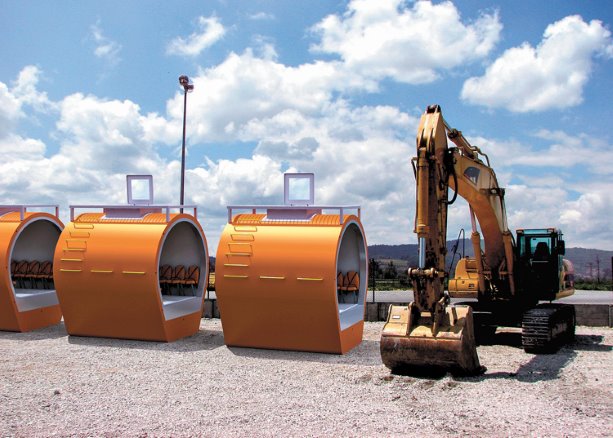Following the 2004 Indian Ocean tsunami that killed 230,000 people, general contractor Miguel Serrano committed himself to finding a way to affordably protect at-risk populations from disaster.
Following the 2004 Indian Ocean tsunami that killed 230,000 people, general contractor Miguel Serrano committed himself to finding a way to affordably protect at-risk populations from disaster.
His response: STATIM (Storm, Tornado And Tsunami Interconnected Module), a survival pod constructed of a series of watertight pre-cast concrete sections.
Serrano is principal of Brahman Developments, LLC, a Florida general contracting firm specializing in residential and commercial projects. He spun off Brahman Industries, LLC to develop the STATIM project.
"I was looking for something that could survive the initial impact of a tsunami and then allow the survivors to remain protected while they wait for rescue," he says.
"I thought of shelters made of steel and other metals, carbon and fibreglass. If the materials used were too light, the acceleration of the first wave of the tsunami would kill the people inside. I couldn’t find a solution that would be cheap and readily available, offer a product with a long lifecycle and that could be used to build the shelter on a large scale by low-skilled labour."
Watching a documentary on the History Channel, Serrano saw how large bridge caissons were built from concrete.
"Concrete had all of the qualities I was looking for," he says. "It’s a low-tech solution that could tackle whatever force a 70-foot wave could throw at it. Sealed against the wave, passengers could survive briefly underwater. The STATIM is self-righting and will bob and float to the surface with controlled buoyancy as the wave passes. An anchoring tether would ensure that the shelter wouldn’t be carried away by the wave."
The STATIM model was designed in collaboration with Martinez Marine Design, a naval architecture and marine engineering firm located in Houston, Texas and Creative Systems, Inc., the developer of naval design software GHS Port.
The design approach has been endorsed by the Tsunami Society International.
STATIM components can be built using simple precast forms, with concrete poured over rebar in a manner similar to precast concrete pipe.
The concrete elements are secured using post tensioning cables and sealed using concrete gaskets from Canadian supplier Hamilton Kent.
"The watertight gaskets allow the segments to move up to 1.5 inches, which makes for a more durable construction than a monolithic structure, which can crack," says Serrano.
A basic model features secure seating for 50 people, washroom facilities, solar panels, batteries, mechanical ventilation, a communication device and enough food and water for two weeks.
"Two weeks is the critical period for survival," he says. "Following Hurricane Katrina in 2005 and the 2011 tsunami that struck Japan, people began dying after four days.
"By the second week there was limited rescue. Nobody will be sending 1,000 helicopters straight off to look for survivors."
Serrano reckons that the basic 50-occupant configuration can be built for US$2,000 per person. However, luxury resort chains have expressed interest in an upscale version featuring cruiseship esthetics, television monitors and hotel beverage service.
Possible design variations include a model propelled by submersible drones and others resistant to electromagnetic pulse and a chemical, biological or nuclear attack.
A GENSET variant would house only a generator inside a pod, tethered to critical coastal infrastructure such as Japan’s Fukushima Daiichi Nuclear Power Plant, or Florida’s Turkey Point Nuclear Generating Station.
Serrano notes that STATIM shelters are ideally suited for coastal areas and islands where timely evacuation would be impossible.
"I see their construction as a civil engineering project," he says. "If Indonesia, for example, wanted to mass produce these shelters we might franchise construction. We could also oversee construction in a joint venture with local contractors, using local labour and material."
The company would also regularly inspect the shelters, note their locations using GPS tracking and provide a central communication command to maintain contact with any STATIM shelter used in an emergency.
"We plan to have the first full-scale model built by this summer," says Serrano. "Through public demonstration and putting an actual STATIM shelter through its paces, we’ll be able to validate the concept thoroughly and build trust in the product prior to roll-out."



Recent Comments
comments for this post are closed